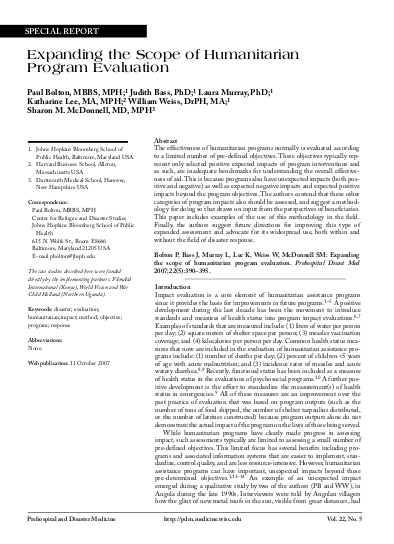
This article argues that current humanitarian impact evaluations are flawed because they focus on expected impacts. It proposes an alternative methodology that uses an initial pre-intervention quantitative survey; followed by post-intervention qualitative interviews to produce free lists of (1) positive, negative, expected, unexpected impacts and (2) the changes that resulted from the programme; and a post-implementation qualitative survey with questions about the issues identified in the free-listing interviews. The article presents two examples of the use of the approach, in AIDS risk education in Kenya and in psycho-social support in Uganda.